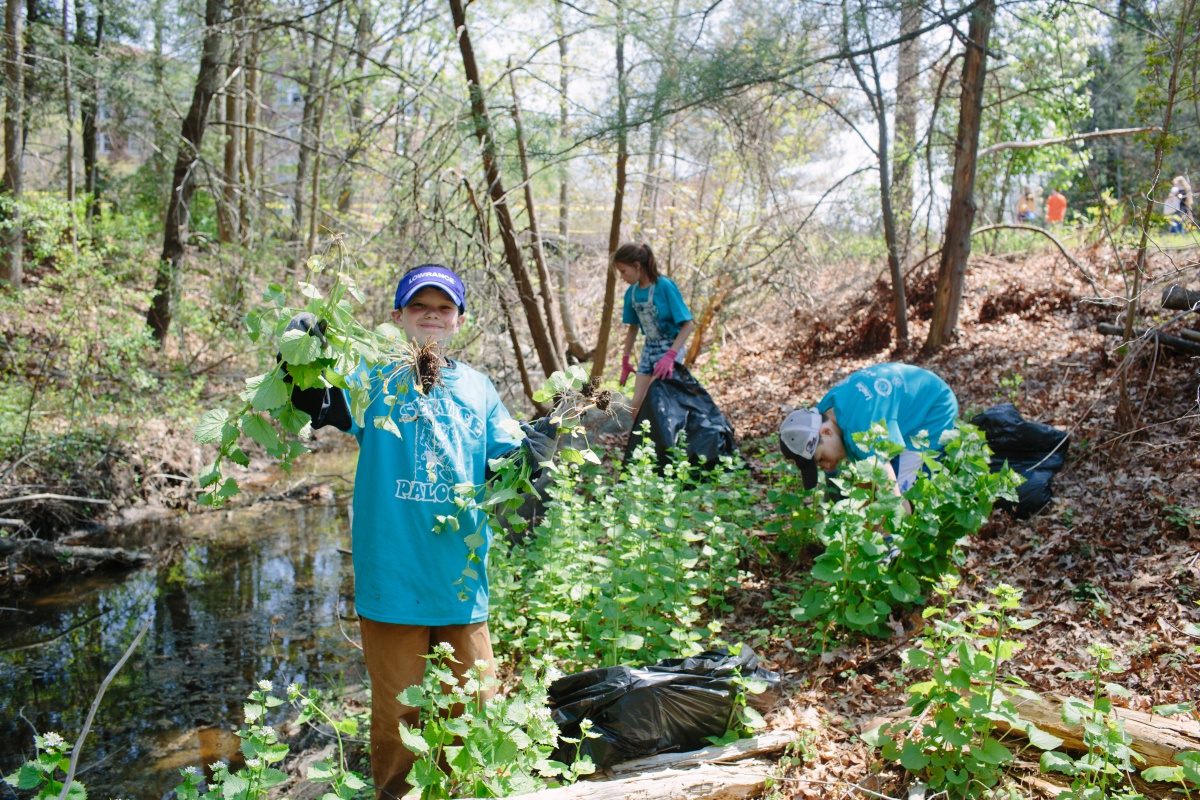New Hampshire’s natural resources are facing growing challenges due to the impacts of climate change. This requires local action to protect our critical natural resources, now and into the future. Fortunately, there are a variety of actions communities can take to address these impacts and protect healthy natural resources, with benefits for both people and wildlife.
How will climate change affect natural resources?
Warmer temperatures will contribute to:
- the spread of invasive species, pests, and diseases
- shifting species ranges, resulting in changing species composition and habitat distribution
- shifting phenology and seasonality, altering species relationships (e.g., pollinator activity) and impacting fall foliage and the maple syrup industry
- greater chance of drought and wildfire
- less snowfall in winter, impacting water supplies, wildlife, and winter recreation
- more frequent cyanobacteria blooms in water bodies
- warmer water bodies, especially affecting coldwater fish
.jpg)
Increasing precipitation and more intense storms will cause:
- increased flooding and erosion, potentially causing damage to habitats and ecologically significant areas
- increased runoff into water bodies, which can carry excess nutrients, sediment, and pollutants
Changing precipitation patterns may increase drought, affecting:
- drinking water resources
- wetlands and surface waters, and the fish and wildlife that depend on them
- agriculture and forestry
- water-based recreation
Top 5 actions Conservation Commissions can implement
- Encourage landowners to preserve the beneficial functions of natural features, such as wetlands, riparian buffers, and upland areas providing flood storage
- Control invasive species on town-owned properties and encourage landowners to do the same
- Communicate and build public awareness about climate change via activities such as local workshops and other events, climate-focused signage, demonstration projects, or high-water mark projects
- Incorporate climate change into municipal documents, e.g., Natural Resource Inventory; land conservation/open space plans; forest and farmland management plans; Master Plan; Hazard Mitigation and Capital Improvement Plans
- Develop and add climate vulnerability and adaptation benefits to the criteria used for prioritizing land conservation projects and conservation easements
What else can Conservation Commissions do?
LAND CONSERVATION
- Assess current and potential future conservation lands for climate resilience and for their ability to protect water resources and store flood waters
- Pursue funding for conservation and stewardship work, especially in high-risk areas
MANAGEMENT AND RESTORATION
- Conduct restoration projects to improve habitat and ecosystem health
- Monitor municipal properties to identify problems (e.g., erosion, invasive species)
- Implement best practices for land management
- Identify opportunities to modify culverts and remove barriers to stream flow

COMMUNICATING AND EDUCATING
- Host educational workshops and stewardship work sessions in your community
- Engage students and community groups in monitoring and restoration projects
- Encourage property owners and businesses to incorporate best available climate science and vulnerability assessments into decision-making
- Provide information to community members about best practices, flood preparedness, and conservation options
- Promote water use restrictions during drought
- Consider implementing a high-water mark project to raise awareness about flooding
LAND USE PLANNING AND REGULATION
- Promote municipal regulations that reduce vulnerability and protect ecosystems (e.g., wetland/riparian buffers, elevation of new structures in the floodplain, etc.)
- Encourage your municipality to consider implementing transfer of development rights and other incentives to acquire or conserve property in high-risk or repetitive loss areas
- Develop water-efficient landscaping regulations that restrict water uses during droughts
Resources & Help
INFORMATION, MAPS/DATA, AND OTHER RESOURCES
More information about the anticipated impacts
- Climate Change Bird Atlas / Climate Change Tree Atlas
- New England and NY Forest Ecosystem Vulnerability Assessment
- NH Wildlife Action Plan
- USA National Phenology Network
Management and Restoration
- Good Forestry in the Granite State
- Landscaping at the Water’s Edge
- NHBugs
- Picking Our Battles
- Stewardship Network New England resources page
- Taking Action for Wildlife
Land Conservation
- Conserving Nature in a Changing Climate
- NH Coastal Viewer / GranitView
- Explore these layers: Conservation and Public Lands; Wildlife Action Plan; Wetlands Inventory
- Coastal region: Land Conservation Focus Areas (2006) and Water Resources Update (2016); Sea-Level Rise Predictions; Sea Level Affecting Marshes Model (SLAMM)
- Land Conservation Plan for NH’s Coastal Watersheds (2006) and Land Conservation Priorities for the Protection of Coastal Water Resources (Technical Report, 2016)
- Moose Mountains Regional Greenways Conservation Action Plan (2017) -- an example of incorporating climate into planning
- Nature’s Network
- North Atlantic Landscape Conservation Cooperative (NALCC) Conservation Planning Atlas
- The Nature Conservancy’s Resilient and Connected Landscapes (data, mapping tool, and report)
Land Use Planning and Regulation
- Innovative Land Use Planning Techniques handbook
- NHDES model regulations for water-efficient landscaping for subdivision and site plan applications
- NHDES model water use restriction ordinance for water systems
Communicating and Educating
- Climate Change in Southern NH / Climate Change in Northern NH
- FEMA’s High-Water Mark Initiative
- NH Coastal Adaptation Workgroup outreach programs/resources
- NH Coastal Risk and Hazards Commission reports
- SOAK Up the Rain Program
POTENTIAL FUNDING SOURCES
Coastal watershed
- Great Bay Resource Protection Partnership transaction grants
- NH Coastal Program (as funds are available)
- Piscataqua Region Estuaries Partnership (as funds are available)
State
- Aquatic Resource Mitigation (ARM) fund, NH Dept. of Environmental Services
- NH Conservation and Heritage License Plate Program
- NH Land and Community Heritage Investment Program
Federal
- FEMA Pre-Disaster Mitigation Grant Program
- FEMA Hazard Mitigation Grant Program
- Land and Water Conservation Fund
- USDA Natural Resources Conservation Service
- USDA Forest Legacy Program
- US Fish and Wildlife Service
Other
- NH Charitable Foundation
- Open Space Institute Resilient Landscapes grants
- Wildlife Conservation Society Climate Adaptation Fund
ORGANIZATIONS
- Great Bay Resources Protection Partnership
- NH Association of Conservation Commissions
- NH Coastal Adaptation Workgroup
- NH Department of Environmental Services
- NH Fish and Game Department
- NH Land Trust Coalition
- NH Sea Grant
- The Nature Conservancy, NH Chapter
- Nature Groupie: Outdoor Volunteers in New England
- UNH Cooperative Extension
- Upper Valley Adaptation Workgroup
- Your regional planning commission
- Your county conservation district
- Your local land trust
